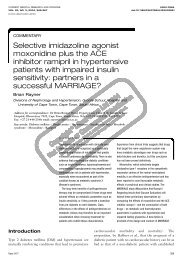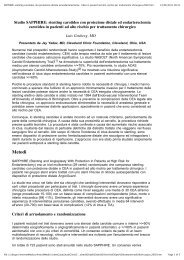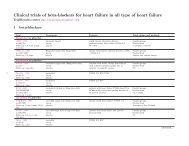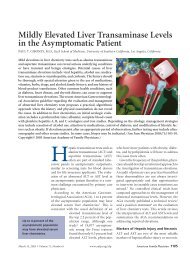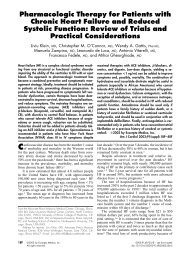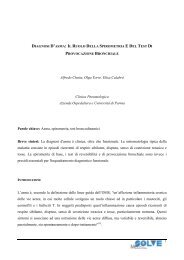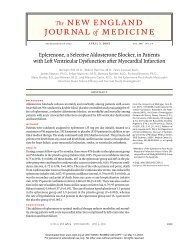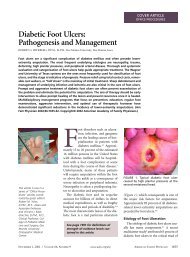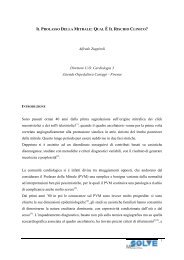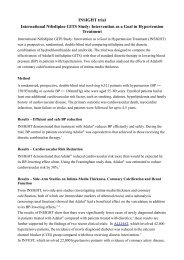Spironolactone for heart failure - Diegori.it
Spironolactone for heart failure - Diegori.it
Spironolactone for heart failure - Diegori.it
You also want an ePaper? Increase the reach of your titles
YUMPU automatically turns print PDFs into web optimized ePapers that Google loves.
<strong>Spironolactone</strong> <strong>for</strong> <strong>heart</strong> <strong>failure</strong>13/06/2011 17:04and diuretic therapy.Best regardsSergio Kaiser, MDThese are important points. The SOLVD study looked at the benef<strong>it</strong> of enalapril inpatients w<strong>it</strong>h CHF. The article referred to by Dr. Kaiser is a retrospective study ofpatients enrolled in SOLVD and found that use of non-potassium sparing diuretics, butnot potassium-sparing diuretics, was associated w<strong>it</strong>h an increased risk of arrhythmicdeath. Un<strong>for</strong>tunately, the exact type of potassium-sparing diuretics was not specified, so<strong>it</strong> is impossible to know whether the major<strong>it</strong>y of patients taking potassium-sparingdiuretics were taking spironolactone or triamterene (not an aldosterone antagonist).If most of these patients were taking spironolactone, then much of the benef<strong>it</strong> seen in thissubgroup in SOLVD might actually be due to aldosterone antagonism (as hypothesizedhere, in RALES), rather than to the prevention of potassium depletion. If, on the otherhand, a significant benef<strong>it</strong> was also present in patients taking triamterene, then one wouldhave to postulate a beneficial effect simply due to the prevention of potassium loss.Prevention of potassium loss alone, however, probably does not account <strong>for</strong> all of thebenef<strong>it</strong> seen in RALES, since an effect was seen on death from progressive CHF also, notonly from arrhythmia.As <strong>for</strong> beta-blockers and aldosterone antagonism, a beneficial effect of spironolactonewas also seen in the subgroup of patients taking beta-blockers, but as you point out, thisrepresents only 10% of the study population. --mjDate: November 11, 1999From: Agostino Colli [agcolli@tin.<strong>it</strong>]In RALES the number of patients in atrial fibrillation is not stated. Evenif one could suppose <strong>it</strong> from the number of patients on dig<strong>it</strong>alis ( 70%)which is just the same in both groups, balancing w<strong>it</strong>h respect to thisfeature is not shown.It is true that the number of patients in atrial fibrillation was not specified. Presumablydig<strong>it</strong>alis was given <strong>for</strong> <strong>heart</strong> <strong>failure</strong>, not <strong>for</strong> fibrillation, in the major<strong>it</strong>y of patients studiedhere. However, I'm not sure that spironolactone would be likely to have more or less ofan effect in patients in fibrillation, so even if the groups were unbalanced in this regard, Idon't think <strong>it</strong> would have affected the outcome. -- mjJanuary 24, 2000From: Javier Ena (jena@san.gva.es)Received: November 30, 1999I read w<strong>it</strong>h great interest your article and I was surprised by the large proportion of patients thatdropped out from study (24% in the placebo group and 26% in the spironolactone group). Could youdetail in numbers the reasons <strong>for</strong> the drop-outs. In add<strong>it</strong>ion, there is some less degree of cardiac<strong>failure</strong> in patients taking spironolactone (27% in class IV in the spironolactone group; 31% in class IVhttp://www.journalclub.org/vol2/a72.htmlPage 7 of 8



